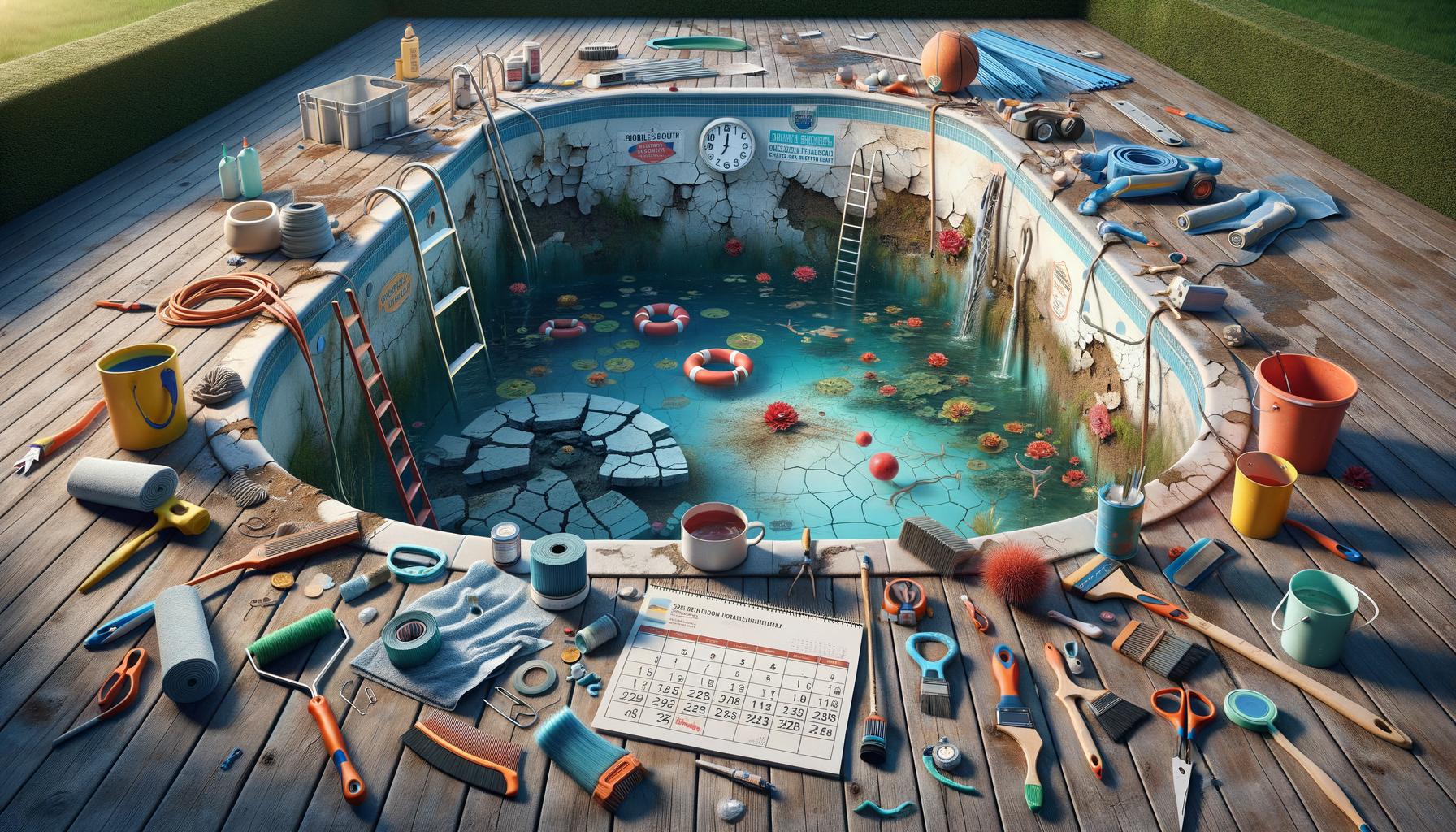Recognizing the Signs for Pool Upgrades
Owning a pool is a luxury that comes with its own set of responsibilities. Over time, pools can show signs of wear and tear that indicate the need for upgrades. Recognizing these signs early can save you from more costly repairs later. Common indicators include cracks in the pool surface, leaks, and outdated equipment. Cracks not only affect the aesthetic appeal but can also lead to water loss. Leaks are another serious issue that can escalate if not addressed promptly, often leading to increased water bills and potential structural damage.
Moreover, outdated equipment can hinder the efficiency of your pool system. If you notice increased energy bills or hear unusual noises from your pool pump, it might be time to consider upgrading to more energy-efficient models. Additionally, if your pool’s design feels outdated, a renovation can breathe new life into your backyard oasis. By staying vigilant and addressing these signs early, you can maintain the value and enjoyment of your pool for years to come.
Exploring Pool Surface Types
When considering pool upgrades, one of the significant decisions involves choosing the right surface type. Each material offers distinct advantages and can dramatically influence the overall appearance and maintenance needs of your pool. Plaster, for instance, is a traditional choice known for its affordability and smooth finish. However, it may require more frequent maintenance compared to other options.
On the other hand, fiberglass offers a sleek, durable surface that resists algae growth and requires minimal maintenance. It’s an ideal choice for those seeking a low-maintenance option. Aggregate finishes, such as pebble or quartz, provide a textured, visually appealing surface that enhances the aesthetic appeal of the pool. These surfaces are not only durable but also offer a variety of color options to complement your backyard design.
Finally, tile surfaces are renowned for their luxurious appearance and longevity. While they may come with a higher upfront cost, their durability and resistance to fading make them a worthwhile investment. By understanding the characteristics of each surface type, you can make an informed decision that aligns with your aesthetic preferences and maintenance capabilities.
Seasonal Timing for Pool Renovations
Timing is a crucial factor when planning pool upgrades. The season you choose can impact the cost, availability of contractors, and the time it takes to complete the project. Spring and summer are popular times for pool renovations due to the favorable weather conditions. However, this peak season often comes with higher costs and longer wait times for contractors.
Conversely, opting for renovations during the fall or winter can be more cost-effective. Contractors tend to have more availability during these off-peak seasons, potentially leading to quicker project completion and even discounts. Additionally, completing renovations in the off-season ensures your pool is ready for use once the warmer months arrive.
It’s essential to plan and schedule your renovations well in advance, regardless of the season you choose. This allows for adequate time to address any unforeseen issues that may arise during the renovation process. By considering seasonal timing, you can optimize your pool upgrade experience and ensure a smooth transition into the swimming season.
Cost Considerations and Budgeting
Understanding the financial aspects of pool upgrades is vital for effective planning. Costs can vary widely depending on the scope of the renovation, the materials chosen, and the time of year. It’s essential to set a realistic budget that accommodates both expected and unexpected expenses. Start by obtaining multiple quotes from reputable contractors to compare prices and services offered.
Consider the long-term savings associated with certain upgrades, such as energy-efficient equipment. While the initial investment may be higher, these upgrades can lead to significant savings on energy bills over time. Additionally, investing in durable materials can reduce the frequency of future repairs, ultimately saving money in the long run.
Creating a detailed budget that outlines all potential expenses, including labor, materials, and permits, can help you stay on track financially. By carefully considering cost factors and setting a realistic budget, you can ensure your pool upgrades are both financially feasible and aligned with your long-term goals.
Choosing the Right Professionals for the Job
Selecting the right professionals for your pool upgrades is a critical step in ensuring a successful renovation. Experienced contractors bring expertise and reliability to the project, helping to avoid common pitfalls and ensure quality workmanship. Start by researching local contractors and reading reviews to gauge their reputation and reliability.
Ask for references and view past projects to assess the quality of their work. A reputable contractor will be transparent about their experience, provide detailed estimates, and communicate effectively throughout the project. It’s also essential to verify that the contractor is licensed and insured, protecting you from potential liabilities.
Building a good rapport with your contractor can lead to a smoother renovation process. Clear communication about your expectations, budget, and timeline can prevent misunderstandings and ensure that your vision is realized. By choosing the right professionals, you can have confidence in the quality and success of your pool upgrade.




Leave a Reply